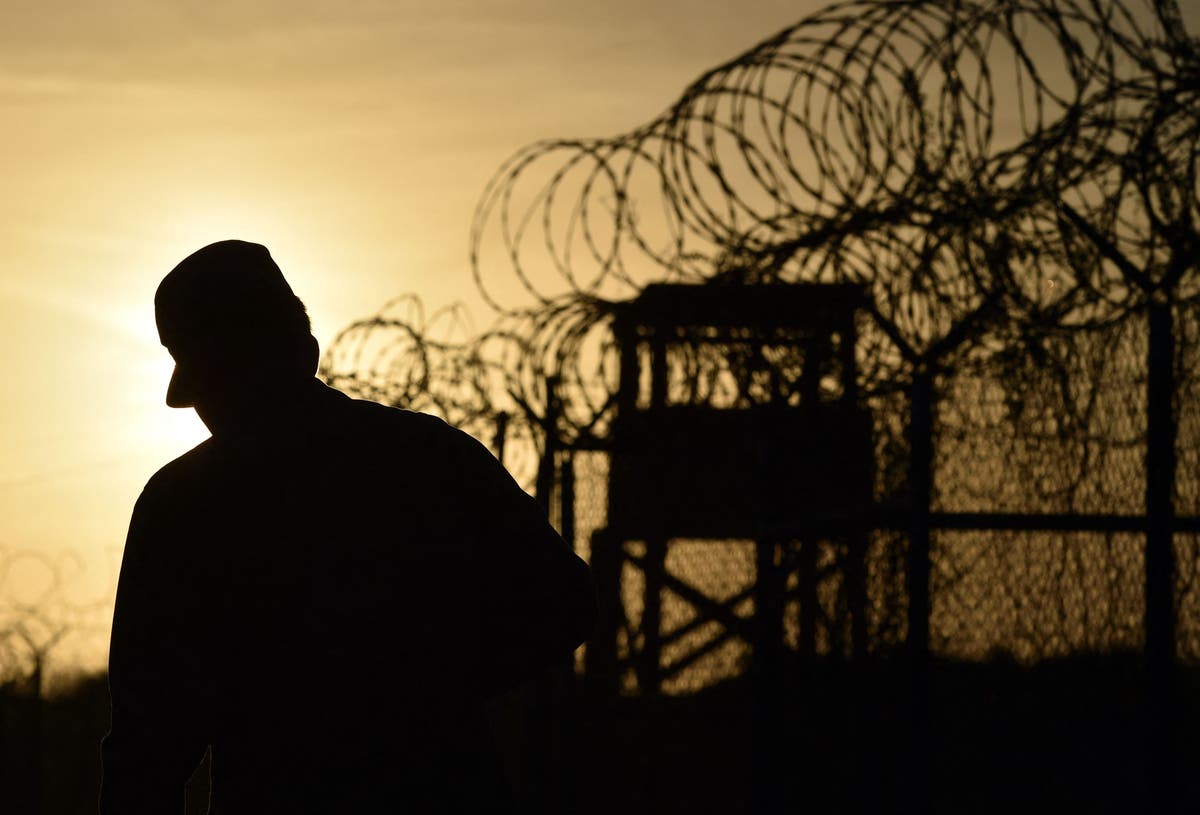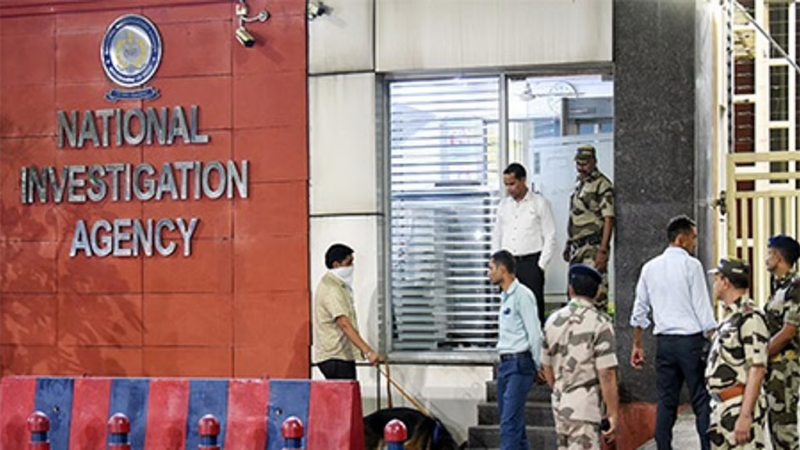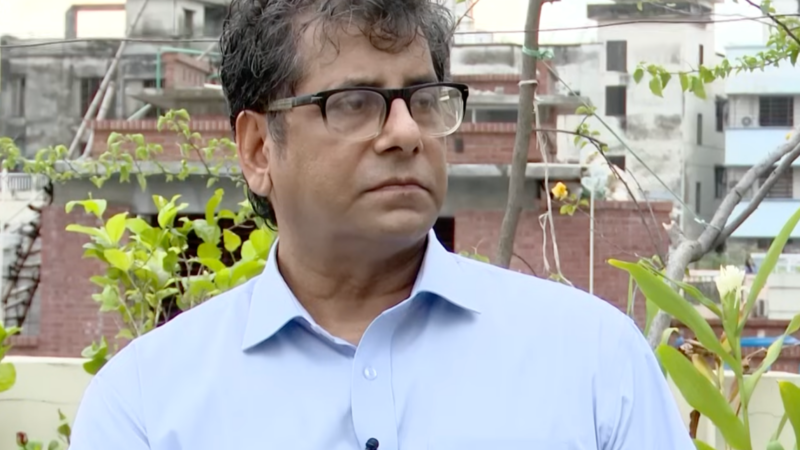Guantanamo Bay: Inside the world’s most notorious detention centre as the war on terror fades away

The elderly prisoner shuffles into the courtroom, guided to his seat at the front by uniformed guards. Nashwan al-Tamir, wearing a white robe and long beard, does not pause to study the rows of people who fill the room, and even if he did he might struggle to find much familiar.
In the nearly 15 years since his capture, and seven since he has faced formal charges of being a high-level al-Qaeda operative who oversaw plots to attack Americans in Afghanistan, the 60-year-old Iraqi has gone through four judges, 20 defence lawyers and several prosecution teams. The courtroom here at Guantánamo Bay Naval Base in Cuba has moved, and the base in which it sits has grown larger. The only constant in these proceedings is Tamir himself, but he has grown older, and moves slower now, due to a degenerative disease.
The world outside has changed dramatically in that time, too. Four different presidents have occupied the White House since he was detained in 2006. US troops will leave Afghanistan by the end of August and, with them, the decades-long “war on terror”, in which Tamir is accused of being a combatant, will end.
In the twilight of this long war, The Independent was given access to Guantánamo Bay to attend Tamir’s latest hearing at this secretive and controversial facility.
Susan Hensler, Tamir’s lead defence counsel since 2017, says the military court system through which her client is being prosecuted here on Guantánamo has yet to catch up to the new reality. “Guantánamo is the only place in the world where the war in Afghanistan is still being fought,” she tells The Independent following the latest hearing.
“This process doesn’t work. The fact that the 9/11 trial is still going on 20 years later is good evidence that it doesn’t work. The fact that my client’s trial has been going on for seven years and yet today we’re discussing how to start over from the very beginning, again, is evidence that it doesn’t work.”
At the first public hearing in more than 500 days, a new judge is being sworn in. An entire team of prosecutors, defence and court staff – as well as a small number of journalists – have been flown to the island to take part in the largely procedural affair. There are delays when the defendant’s wheelchair is not brought to the court, and again when the guards forget his medication. The hearing lasts two days, at which point everyone flies home again.
These delays are by no means unusual. This case has seen some 40,000 pages of briefings and orders and 3,000 pages of transcripts, but Tamir’s trial is yet to begin. The same is true of the alleged masterminds of the 9/11 attacks, which set this entire affair in motion. Justice, if any is to be had, moves slowly in Guantánamo Bay.
Camp Justice on Guantánamo Bay Naval Base, Cuba, where military trials of terror suspects take place (Richard Hall/The Independent)
The extraordinary quasi-legal structure in operation here in the aftermath of September 11, to prosecute those described by the Pentagon as “the worst of the worst”, was not built with efficiency in mind. The processes designed to skirt the US justice system and its protections have delayed and prolonged the trials of those held here for years now.
US president Joe Biden is said to be working quietly to close the detention facility, which became synonymous with the excesses of the war on terror throughout the George W Bush years. On Monday, it transferred the first prisoner of the administration – a Moroccan named Abdullatif Nasser who had been captured in Afghanistan in 2002.
Secret transfers, incommunicado interrogations, forced feeding of hunger strikers, torture, enforced disappearance
Since the first batch of 20 prisoners arrived in 2002, some 780 detainees have passed through this island facility. Hundreds have been released without charge, some transferred to third countries, and 39 remain.
Those who conceived of using the naval base as a detention facility saw it as a place where detainees could be held outside the boundaries of US law. Large numbers of prisoners could be interrogated for intelligence in secrecy. Many imprisoned here were subjected to torture, including waterboarding, sleep deprivation, sexual harassment and physical abuse. Some were also tortured at CIA “black sites” prior to their arrival.
Images of the first detainees arriving at Camp X-Ray, a temporary holding facility surrounded by barbed wire and watchtowers, became synonymous with the US response to 9/11 – as much as the wars in Iraq and Afghanistan. For many, they were a potent symbol of how America compromised its values in the quest for justice.
Looking down from a hill above, you can still see the outlines of a complex that once drew the gaze of the world. The watchtowers, the corrugated roofs of holding cells and interrogation rooms and the spiralling barbed-wire perimeter all remain. Missing from this view nearly 20 years later are the blindfolded men in distinctive orange jumpsuits, kneeling on the floor.
It was used only for a few months before the prisoners were transferred to a more permanent facility. The weeds have taken over now; the wooden structures are rotten and everything has turned a dull, rusty brown.
Ever since Camp X-Ray opened, rights groups have called for its closure, and the closure of its successor detention facilities at Guantánamo. In a report released earlier this year, which alleged “ongoing human rights violations” at the base, Amnesty International again called on Mr Biden to shut the prison down.
“These are detentions that are inescapably bound up with multiple layers of unlawful government conduct over the years – secret transfers, incommunicado interrogations, forced feeding of hunger strikers, torture, enforced disappearance, and a complete lack of due process,” said Daphne Eviatar, director of security on Amnesty’s Human Rights programme.
“This is about more than just the 40 people still held at Guantánamo – it is also about the crimes under international law committed over the past 19 years and the continuing lack of accountability for them. It is about the future, too, as we move towards the 20th anniversary of the 9/11 attacks and strive for enduring justice.”
Camp X-Ray, where the first prisoners were brought to Guantánamo Bay in 2002, now lies abandoned (Richard Hall/The Independent)
In pushing to close the detention facility at Guantanamo, Mr Biden is aiming to succeed where his Democratic predecessor failed. Barack Obama campaigned on closing the prison complex, seeing it as an affront to American values.
“In the dark halls of Abu Ghraib and the detention cells of Guantánamo, we have compromised our most precious values,” President Obama said on the campaign trail in 2007.
He issued an executive order to close it on his second day in the White House in 2009. But although the prison population was reduced from 245 to 41 detainees during his two terms in office, Guantanamo Bay remained open. Congress refused to allow detainees to be transferred to the US.
Complex cases like Tamir’s demonstrate the difficulties Mr Biden will face.
Tamir, who is charged under the name Abd al Hadi al Iraqi, was arrested in Turkey in October 2006. The US government charges allege he was trying to travel to Iraq to “advise and assist” al-Qaeda. He is also charged with commanding fighters who carried out attacks on US troops and civilians in Afghanistan.
In the military commission system, presiding judges rotate every few years, a process which ensures repetition and delays. To complicate matters further, one of the previous judges in Tamir’s case was found to have a conflict of interest, meaning that all of his rulings may have to be relitigated.
Holding the trials in Guantánamo, outside of the US justice system, means that prosecution and defence teams have to be flown in for each hearing at an enormous cost. An investigation by The New York Times estimated the total cost of detention and trials on the island at $13m (£9.5m) for each prisoner a year .
There is also a layer of secrecy to the proceedings which Hensler, Tamir’s lawyer, says prevents her client from having a fair trial. “Every military commission case involves at its centre someone who has been tortured and mistreated by the US government,” she says. “Under the military commission system, we just simply can’t get access to the documents and the witnesses we need to find out more about that mistreatment that we can present on the record.”
As for what should be done with the detention facility and the military commission, she says: “The war is over and that should be the end of this commission.”
Matthew C Waxman, a law professor at Columbia University and former Pentagon official who oversaw detainee affairs in the Bush administration, is also among those who believe the facility should be closed.
Mr Waxman served under Condoleezza Rice in the National Security Council from 2001 to 2003, and as the first deputy assistant secretary of defence for detainee affairs in 2004 and 2005.
It’s more than a prison, it’s more than a detention facility
He tells The Independent that the US government “bought into” the legal proposition that it may detain al-Qaeda fighters at the base for the duration of the war with that organisation, “but they have never fully grappled with what happens if that war goes on indefinitely, for decades”.
The actual process of closing the facility, he says, is fraught with difficulty.
“It’s easy to criticise Guantánamo but hard to implement alternatives. It has been politically impossible to move detainees into the United States, and getting foreign countries to take some of them has been difficult,” he says.
“Some of the detainees who remain include top al-Qaeda leaders and 9/11 plotters who the United States has been unable to prosecute but will not be willing to let go or transfer.”
When asked if there were lessons to be learned from the use of the base as a detention facility, he says: “There was an urgent need to deal with difficult detention issues after 9/11, but Gitmo policy was initially made with inadequate attention to long-term costs.”
The inhabitants of Guantánamo Bay Naval Base appear mostly immune to the debate raging outside. Spread out across 45 square miles of the natural harbour, it is home to some 6,000 military members, civilians, contractors, families and migrant workers.
The base looks more like an American town than it does a military installation. It has a McDonald’s, a bowling alley, several restaurants, beaches and paved roadways. Just a few minutes from the notorious Camp X-Ray are large family homes with manicured lawns. New buildings are going up on one of the main streets.
A bowling alley at Guantánamo Bay Naval Base, Cuba (Richard Hall/The Independent )
It is a common misconception that efforts to “close Guantánamo” would mean closing the entire base, which is in itself the subject of controversy. Those discussions refer only to the detention centre and accompanying courts.
The US has controlled the bay since 1898, when it captured it from the Spanish during the Spanish-American War. It signed an indefinite lease for the base with the Cuban government in 1903 that has no expiration date. The Cuban government today says the base is illegal and has repeatedly called for its removal. But the strategic importance of the base to US presence in the Caribbean makes it unlikely that it would give it up in a hurry.
The new commanding officer of the base, Captain Samuel White, is keen to impress on visitors that the prison is just a small part of what happens here. While he oversees the base operations, there is a separate command in charge of the prison and the military commission.
“The exposure that it received based on the detention facility is understandable, but it’s not the sole function of this installation,” he tells The Independent in his office overlooking the ocean.
“This installation has been here for over a hundred years, so the fact that its been here for a hundred years shows you that it’s more than a prison, it’s more than a detention facility.”
Captain White compares his role as the commander of the base as a landlord overseeing tenants – one of which happens to be a detention facility.
“I’m not making a judgement on good, bad, whatever, whether something needs to be put behind us. A tenant is here to do a specific mission and we have an obligation for the security and safety of all personnel on this installation.”






